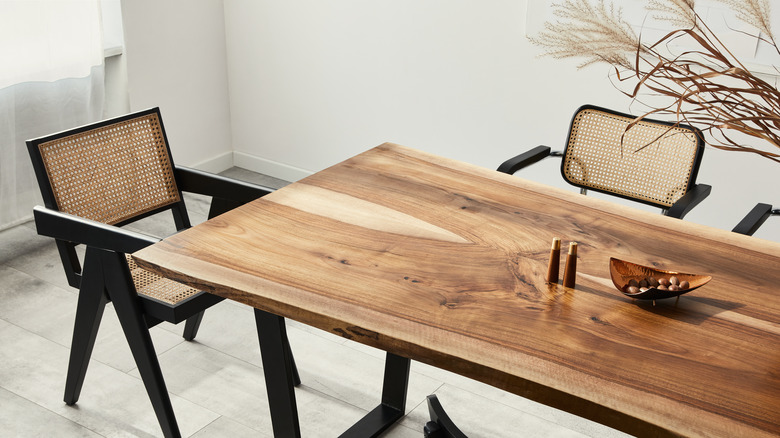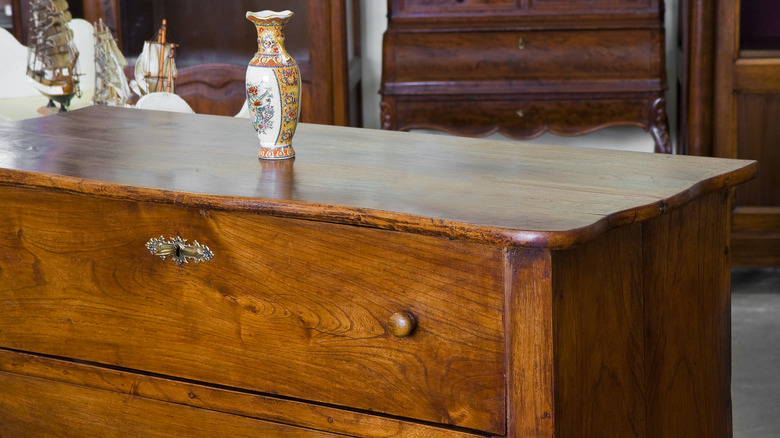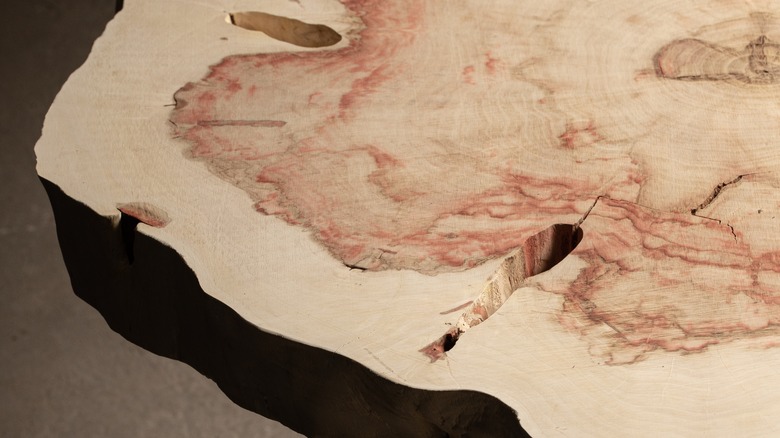How To Tell If Wood Furniture Defects Are Natural Imperfections Or Signs Of Damage
There's something natural and enjoyable about running your hand over a piece of wood, feeling the intricacies of its grain and its rough knots. What makes wood ideal for so many design styles is its imperfectness. No two pieces look, feel, or function the same way, yet it creates a stunning beauty in your home when brought together.
Whether you're purchasing a solid oak table or a wardrobe made of cherry, chances are that you'll want to look over the entire thing, ensuring there are no problematic defects. You're worried when you find something, perhaps a knot that looks a bit too big or an area where the wood seems to be a different color, maybe even with a greenish tint. Could this be just a natural flaw to love, or is it a sign of wood damage to the new, high-end piece of wood furniture you want to buy?
Know which wood imperfections are normal
As you compare a variety of products to determine which is the best to take home, pay close attention to the details. Wood planks from the same tree will look different and may have some color variances, too. Sapwood has a lighter color than the inner portion of the trunk, for example. Also, take note of the grain variations. The grain of the tree's boards shows growth rings, indicating the tree's age. This lends itself to swirling lines in your furniture pieces, and that's very much normal. Even when cut one after the other, grain patterns will differ from one board to the next. Mineral streaks, darker lines evident in the wood, are a common concern but are also normal and come from the soil during growth.
A common concern is wood knots, often circular areas of discoloration where it may even look like the material are rotting. Some types of wood, like pine, tend to have more knots than harder varieties of wood. Smaller knots are not a problem, especially if they seem pretty sturdy and whole, but those larger than the palm of your hand shouldn't be in your furniture.
Indications that your furniture has wood damage
Take a step back from the piece of solid wood furniture to notice its overall shape. A bowed shape on a flat table indicates that warping and water damage likely occurred, which is not an ideal sign. Next, closely examine the joints, where two pieces of wood come together to form a corner or a notch. Do they align well? Small gaps are a sign that the wood has experienced some humidity change, but that's not necessarily a bad thing unless the wood is brittle or the gaps are large.
Cracks are concerning and often happen when the wood hasn't been moved properly from moist to dry areas. Large gaps don't occur if the furniture is treated correctly during drying. Wood from tropical regions is more likely to have cracks and fissures like this because of the moisture difference. Also, you shouldn't see significant glue lines when looking at the piece, as these can indicate improper bonding of two boards. When you want to buy furniture built to last, invest in an overall visual inspection of the piece and avoid those items with these warning signs.


